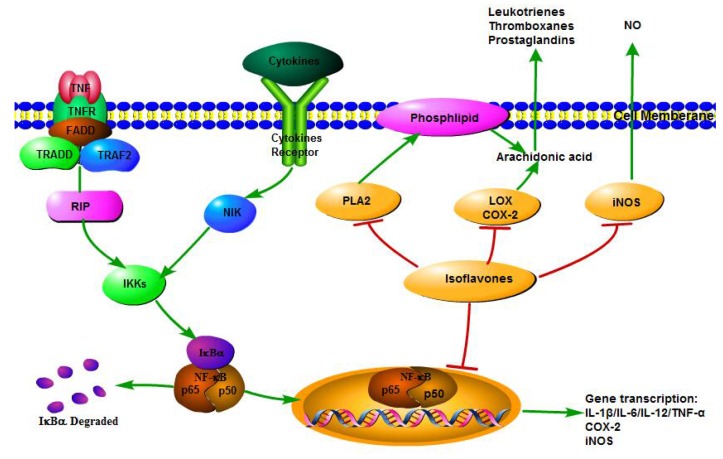Figure 2.
Anti-inflammatory mechanisms of isoflavones. Upon stimulation, cytoplasmic NF-κB is activated by IκB kinase (IKK). Then, free NF-κB translocates into the nucleus and activates the transcription of target genes including pro-inflammatory cytokines and chemokines, inducible nitric oxide synthases (iNOS), and cyclooxygenase 2 (COX-2). Isoflavones decrease the production of these pro-inflammatory contributors by inhibiting the NF-κB transcriptional system. Also, isoflavones modulate arachidonic acid (AA) metabolism and NO production by inhibiting the protein levels and activities of pro-inflammatory enzymes (phospholipase A2 (PLA2), lipoxygenase (LOX), COX-2, and iNOS). The metabolites of AA—including prostaglandins (PG), leukotrienes and thromboxances, and NO—are crucial mediators of inflammation.

